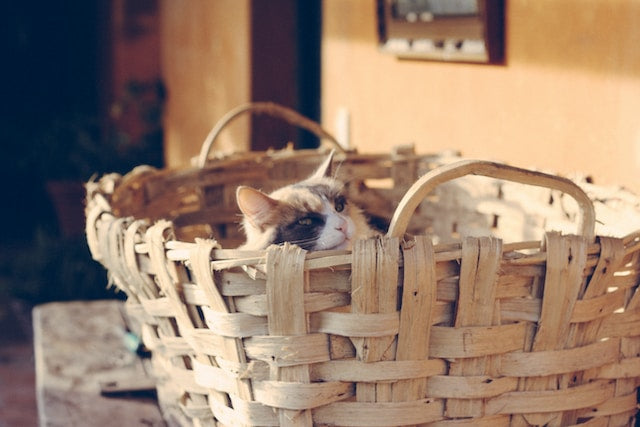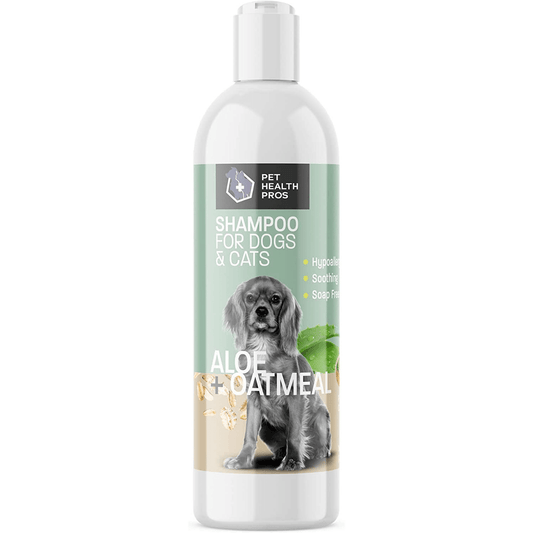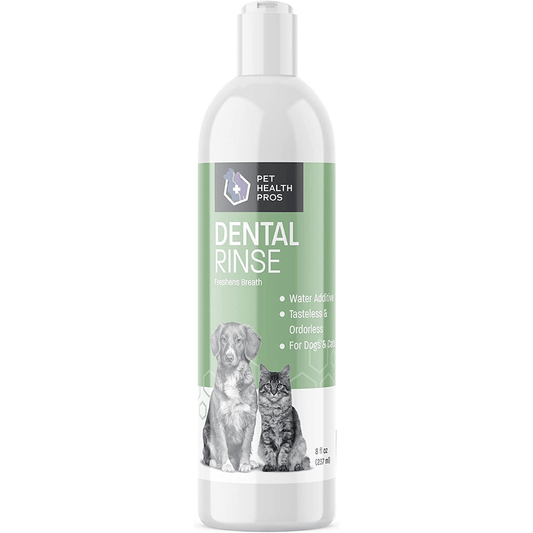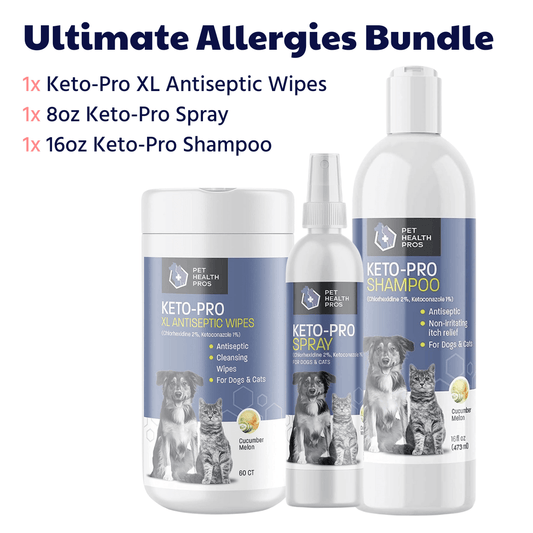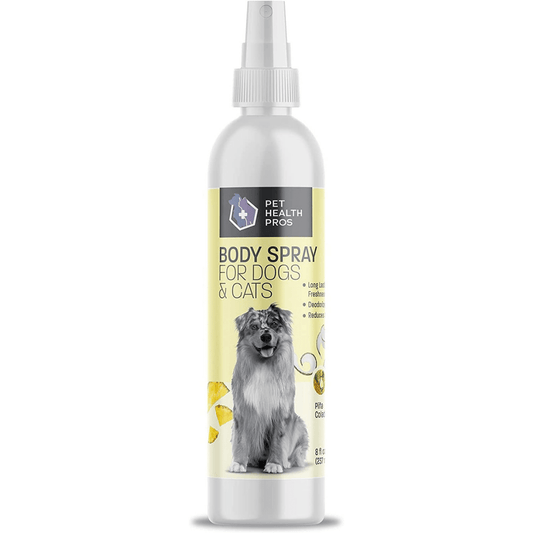
We, as cat owners, must prioritize the safety and well-being of our beloved feline friends. To create a comfortable home environment, we must recognize the hidden dangers that may lurk within our dwellings. From everyday objects to toxic substances, various risks may adversely affect our cats' health.
We must stay alert for potential hazards and take proactive steps to mitigate these dangers. Common household products may contain substances harmful to cats when ingested or exposed to their sensitive systems. To protect our felines, we must research and choose pet-friendly alternatives for these essentials.
Proper storage for chemicals and medications is also essential. Cats are known for their curiosity, so we must ensure hazardous substances are stored securely. Environmental factors like secondhand smoke can pose significant risks to cats due to their smaller lung capacity. Let us create a smoke-free environment to keep both humans and cats healthy.
A study in The Journal of Animal Science and Biology reveals an alarming number of cats suffer from exposure-related illnesses due to household hazards. This emphasizes the importance of staying informed and taking steps to shield our cats from these hidden dangers.
As responsible cat owners, let us be mindful of the risks within our homes and take the necessary precautions to keep our feline companions safe. By remaining vigilant and knowledgeable, we can create a secure environment that enriches their lives while safeguarding their health. Together, let us make our homes true havens for our beloved cats.
Common Household Items That Affect Cat's Health
Common household items can have hidden dangers that impact your cat's health. Here are six points to consider:
- Cleaning Products: Many cleaning products contain chemicals that can be toxic to cats. Ensure that cleaning products are stored securely and away from your cat's reach.
- Medications: Keep medications, both prescription and over-the-counter, out of your cat's reach. Even small amounts of certain medications can be harmful or fatal to cats.
- Plants: Some common household plants, such as lilies, are toxic to cats if ingested. Make sure to research the plants in your home and keep any toxic ones out of your cat's reach.
- Electrical Cords: Cats may chew on electrical cords, leading to electrical shocks or burns. Keep cords hidden or covered to prevent this danger.
- Fragrances and Essential Oils: Some scented products, including essential oils, can be toxic to cats. Avoid using these products around your cat or ensure proper ventilation.
- Food and Beverages: Certain foods and beverages, such as chocolate, alcohol, and caffeine, can be toxic to cats. Make sure to keep these items out of reach and avoid sharing human food with your cat.
It is important to remember that each cat is unique, and what may be harmful to one cat may not affect another in the same way. Stay vigilant and observant of your cat's behavior, seeking prompt veterinary attention if any concerning symptoms arise.
To ensure your cat's safety, consider these suggestions:
- Store all hazardous products, including cleaning supplies and medications, in closed cabinets or high shelves.
- Keep toxic plants out of your home or place them in areas where your cat cannot access them.
- Use cord covers or deterrent sprays to protect your cat from electrical cords.
- Choose unscented or pet-safe products to minimize the risk of toxic exposure.
- Dispose of any food or drink containers properly to prevent your cat from accessing them.
- Stick to a well-balanced and appropriate diet for your cat, avoiding foods that are known to be toxic.
By taking these precautions, you can create a safe environment for your cat and prevent any potential health risks. Your cat's well-being should always be prioritized, and a safe home is essential for their overall health and happiness.
Cleaning your house with chemical products is a bit like playing Russian roulette, only the bullets are replaced with toxic fumes and the gun is your beloved cat.
Chemical Cleaning Products
Do you know your home cleaning products can harm your furry feline friends? Here's what to keep in mind:
- Toxins can be absorbed through paws or when cats groom themselves after walking on these surfaces.
- Strong household cleaners can irritate respiratory systems leading to coughing, sneezing & difficulty breathing.
- Cats have sensitive skin. Certain cleaning agents can cause allergic reactions on their fur or skin.
- If they accidentally ingest any cleaning product, it can lead to poisoning - vomiting, diarrhea, lethargy & loss of appetite.
It's essential to look out for your cat's health when using chemical cleaning products. Using pet-friendly alternatives or natural solutions is the way to go!
For a safer environment:
- Use non-toxic cleaning products labeled safe for pets. Avoid chemicals like ammonia, bleach & phenols.
- Use vinegar-based solutions instead of harsh chemicals. It's a natural disinfectant that's safe for cats & humans.
- Keep your cat away from freshly cleaned areas until surfaces are dry.
- Clean surfaces cats frequently interact with, like litter box or bedding, using pet-safe products.
By following these tips, you can keep a clean & safe environment for your cat. Their well-being is in your hands!
Plants Toxic to Cats
When it comes to cats, safety is key! Five plants to watch out for:
- Lilies
- Pothos
- Aloe Vera
- Dieffenbachia
- Sago Palm
These can be harmful if chewed or ingested. Research plant species before bringing into a home with cats. And, if there's suspicion of toxicity, seek veterinary help right away!
Whiskers, a cat, was a sad case. Her owner didn't know lilies were toxic. She began vomiting and showed signs of kidney failure. Despite medical care, her condition worsened and she passed away. This serves as a reminder of the importance of being informed about toxic plants & taking precautions to keep cats safe.
Human Medications
Human medications can have a huge effect on a cat's wellbeing. So, it is essential to be aware of the risks these medications can bring to our feline friends. Let's take a closer look at some common human medications and their effects on cats.
Aspirin can cause serious toxicity, resulting in stomach bleeding and kidney damage. Acetaminophen is very toxic and can lead to liver failure in cats. Ibuprofen can be nephrotoxic for cats, causing kidney damage and stomach ulcers.
Other human medications like antidepressants, antihistamines, and blood pressure meds can also have bad effects. Storing them securely away from curious paws is key.
Precaution is always best when it comes to our cat's health. Consult with a vet before giving human medications to your cat. They will give you guidance based on your cat's individual needs.
By taking necessary steps, you can be sure that your beloved feline companion lives a long and healthy life. Don't put their health at risk. Seek professional advice and provide your furry friend with the best care.
Candles and Air Fresheners
Emily's cat, Luna, had a respiratory problem when scented candles were lit. So Emily removed the source of irritation and the cat's issues improved. Candles and air fresheners can be dangerous for cats - certain fragrances can irritate their respiratory system, and the strong scents can cause stress. Ingestion can even lead to poisoning. Although not all cats are equally sensitive, it's best to be cautious. Keeping your cat safe should be a priority!
Hidden Dangers in Food and Water
Hidden Hazards in Your Cat's Food and Water
Cats are susceptible to various hidden dangers in their food and water that can significantly impact their health. To ensure the well-being of your feline friend, it is essential to be aware of these risks and take appropriate measures to mitigate them.
To understand the potential hazards lurking in your cat's food and water, let's dive into the details through a comprehensive table:
| Hidden Dangers | Examples |
|---|---|
| Artificial Additives | Food colorings, preservatives |
| Contaminants | Bacteria, toxins |
| Allergens and Sensitivities | Wheat, dairy products |
| Improper Storage | Spoiled food, mold |
Artificial additives, including food colorings and preservatives, can have adverse effects on your cat's digestive system and overall health. Contaminants such as bacteria and toxins may be present in the food or water, posing a significant risk to your pet's well-being. Allergens and sensitivities to ingredients like wheat and dairy products can lead to allergic reactions or digestive issues in cats. Additionally, improper storage of food can result in the growth of harmful mold or consumption of spoiled food by your cat.
It's crucial to understand that these hidden hazards in your cat's food and water can have a severe impact on their health. By taking the necessary precautions, such as opting for natural and holistic cat food options, regularly checking for potential contaminants, and ensuring proper storage conditions, you can protect your pet from these risks.
Don't let your beloved feline suffer from these hidden dangers. Take action now to provide them with a safe and healthy diet, ensuring their long and happy life.
Prepare your kitty for a surprise party with commercial cat food - it's filled with harmful ingredients that will keep them on their toes (and at the vet).
Harmful Ingredients in Commercial Cat Food
Commercial cat food can be a risk to our feline companions. Knowing what ingredients are in the food and what risks they bring is key.
- Preservatives like BHA, BHT, and ethoxyquin are used to extend shelf-life. But, these can lead to allergies and kidney damage.
- Fillers like corn, wheat, and soy provide little nutrition and can cause digestive issues and food allergies.
- Chemical additives like colors and flavors have no nutritional value. They can cause allergic reactions or digestive problems.
- Cats need mostly meat, but some commercial foods contain too many carbs. This can make cats overweight, prone to diabetes, and other health issues.
Not all commercial cat foods contain bad ingredients. Choose high-quality brands for natural ingredients. For extra help, ask a vet who knows about feline nutrition. They can give advice on the best diet for your cat.
Tap Water Contaminants
Water is a must-have for us to survive. However, it can also be a potential risk. Tap water may contain various contaminants that can harm us. Let's take a look at them and their effects.
Contaminants in Tap Water:
| Contaminant | Source | Potential Effects |
|---|---|---|
| Chlorine | Water disinfection | Eye and skin irritation |
| Lead | Old plumbing | Development delays in kids |
| Arsenic | Natural deposits | Skin damage and cancer risk |
| Nitrates | Fertilizers and sewage | Oxygen deprivation in infants |
We need to be aware of these pollutants as they can build up in our bodies and cause long-term health issues. Water treatment plants do their best to reduce or remove them, but we still need to take precautions like using a filter or buying bottled water.
Tap water contaminants have been a worry for a long time. The Romans used aqueducts to get water, not knowing what was inside. The Flint water crisis is a reminder of the consequences of bad management of tap water quality.
In conclusion, tap water contains contaminants that can be dangerous. As responsible people, it's a good idea to stay informed about the risks and take measures to ensure our drinking water is safe. Knowledge is power when it comes to hidden dangers in food or water. Be alert and make wise decisions for yourself and your family.
Allergens in the Home
Allergens present in your home can have a significant impact on your cat's health. These substances, which can trigger allergic reactions, are often found in everyday household items.
For instance, dust mites are a common allergen found in many homes. These microscopic pests thrive in mattresses, pillows, and upholstery, and their droppings can cause allergic symptoms such as sneezing, itching, and respiratory issues in cats.
Another allergen commonly found in homes is pet dander. Even if you don't have any other pets, your cat's own dander can cause allergic reactions. This can be especially problematic for individuals with a sensitivity to cat allergens, leading to symptoms like watery eyes, coughing, and congestion.
Additionally, household cleaning products can contain chemicals that can be harmful to cats and may trigger allergic reactions. Some cleaning agents contain strong fragrances or artificial additives that can irritate a cat's respiratory system, leading to breathing difficulties and other symptoms.
To reduce the presence of allergens in your home and improve your cat's health, consider the following suggestions:
- Regularly clean and vacuum your home to remove dust, pet dander, and other allergens. This will help minimize exposure to these substances and reduce the risk of allergic reactions in your cat.
- Use fragrance-free and non-toxic cleaning products that are safe for pets. Look for products labeled as pet-friendly or specifically formulated for households with animals.
- Wash your cat's bedding and toys frequently to remove allergens that may have accumulated on them. Using hypoallergenic bedding materials can also help reduce allergen buildup.
- Consider investing in an air purifier with a HEPA filter, which can help remove allergens from the air and create a healthier environment for both you and your cat.
By taking these steps, you can create a home environment that is less likely to harbor allergens and promote better health for your cat.
Cat allergies are like dust mites: both make your cat sneeze, but only one can be vacuumed up.
Dust mites and Cat Allergies
Dust mites and cat allergies are two pesky allergens. They can cause sneezing, itching and even asthma. Here are three key points to know:
- Dust mites are tiny creatures that love humid environments. They feed on dead skin cells and their droppings contain allergens that can become airborne.
- Cat allergies are caused by proteins in dander, saliva and urine. When these proteins come in contact with our skin or lungs, they trigger an immune response and allergies.
- To manage dust mites and cat allergies, use allergen-proof covers and clean regularly. Also, reduce exposure to cats.
Did you know? Dust mite allergy is more common in humid climates. Some people develop tolerance to certain allergens. Others may experience worsening symptoms.
My friend Sarah had an interesting experience with cat allergies. She had cats her whole life without issues, then suddenly developed severe allergic reactions. She had a new sensitivity due to changes in her immune system. Allergy predispositions can change over time.
Mold and Fungal Spores
Mold and fungal spores are common allergens in homes. They can hide in damp areas, like basements, bathrooms, and kitchens. They can easily become airborne and cause allergies when inhaled.
Sneezing, coughing, and itchy eyes can all be triggered by mold and fungal spores. People with asthma or other respiratory conditions may worsen their symptoms. It's important to keep the home clean and dry to avoid mold and fungi growth.
Some types of mold produce toxic substances called mycotoxins. They can be dangerous if ingested or inhaled for a long time. Therefore, the presence of mold and fungal spores shouldn't be overlooked.
To guarantee a healthy living environment, moisture issues must be addressed promptly. Inspect damp areas and fix any leaks or water damage immediately. Proper ventilation is also needed to stop humidity from building up and promoting mold growth.
Don't let allergens like mold and fungal spores take over your home. Take action now to protect yourself and your family from health hazards. Keep your space clean, dry, and well-ventilated. Your health is worth it!
Environmental Hazards
Environmental Hazards
Environmental hazards refer to potential dangers in your home that can negatively affect the health of your cat. It is crucial to identify and address these hazards to create a safe and healthy living environment for your feline companion.
- Household Chemicals: Common household chemicals such as cleaning agents, pesticides, and certain plants can be toxic to cats if ingested or even if they come into contact with their skin. It is important to keep these substances out of reach and use pet-friendly alternatives whenever possible.
- Household Products: Certain household products like electrical cords, plastic bags, and sharp objects can pose a threat to your cat. It is important to ensure these items are properly stored and inaccessible to prevent accidents or injuries.
- Air Quality: Poor air quality can have a detrimental impact on your cat's respiratory system. This can be caused by factors such as cigarette smoke, air fresheners, and certain cleaning products. Opting for natural and pet-safe alternatives can help maintain a healthy indoor air environment.
- Mold and Mildew: Damp environments are breeding grounds for mold and mildew, which can be harmful to your cat's health. Regularly inspecting your home for any signs of mold or moisture and taking appropriate measures to address these issues is crucial.
- Open Windows: Open windows present the risk of falls for cats, especially if they are not supervised. Installing window screens or keeping windows closed when your cat is unattended can help prevent accidents.
- Inadequate Litter Box Care: An unclean or improperly maintained litter box can lead to various health problems for your cat. Regularly scooping, cleaning, and providing multiple litter boxes in multi-cat households is essential for maintaining good litter box hygiene.
Beyond these hazards, it is important to be vigilant and address any potential dangers that may arise in your home environment. By being aware of these hazards, you can ensure the safety and well-being of your beloved feline companion.
True story: A cat owner in a busy household unknowingly left a package of toxic cleaning supplies within reach of her mischievous cat. Unfortunately, the cat managed to puncture the package and ingested the harmful chemicals. The cat became severely ill and required immediate veterinary intervention. This incident highlights the importance of carefully storing and handling household chemicals to avoid such devastating consequences.
Watch out for open windows and balconies, because nothing says adventure to a cat like dangling 10 stories above the ground by their claws.
Open Windows and Balconies
Open windows and balconies can be hazardous. A strong breeze can carry pollutants and dust into your home, causing breathing issues. Being wary is crucial for a healthy environment.
If you like to open windows or spend time on your balcony, be aware of the risks. Dust and pollutants can easily enter your house, making the air unhealthy. This can cause allergies or asthma problems.
To reduce the danger, regularly clean windowsills and screens. Also, buy window filters to catch particles before they come in. Taking these steps can make the air inside your home better.
Also, think about the outside environment when opening a window or going on a balcony. For example, if you live near an industry or a busy road, the air may be polluted. Check air quality indexes to know when it's safe to open your windows.
My friend Sarah used to open her windows often. But one day, she got breathing problems due to high pollution levels outside. She needed weeks of medical care to get better. Now, she is very careful about the air before opening windows or stepping out on the balcony.
Unsecured Cabinets and Appliances
Cabinets and appliances must be secured for safety. Unsecured cabinets can cause objects to fall, resulting in injuries. Appliances left unsecured can cause electrical hazards or be easily used by kids. Moreover, toxic substances can be swallowed accidentally from unlocked cabinets.
Not only are physical risks present when cabinets and appliances are unsecured, but other issues arise too. For example, pests such as rodents are attracted to open cabinets, which is unsanitary. Furthermore, energy consumption and utility bills may be higher with unsecured appliances. Additionally, leaving cabinets unlocked can make it easier for unauthorized individuals to access private items.
The United States Consumer Product Safety Commission (CPSC) discovered in a study that 25,000 children are injured yearly from unsecured furniture or TVs toppling over them.
Sharp Objects and Hazardous Materials
Sharp objects and hazardous materials can be risky to both the environment and human health. It is essential to handle, store, and dispose of these items correctly. To understand the threats, let's look at the following table:
| Item | Risk Level | Recommended Handling |
|---|---|---|
| Broken glass | High | Wear gloves. Dispose in designated bins. |
| Chemical spills | Moderate to high | Use protective gear. Absorb spills with absorbent materials. Report incidents. |
| Needles | High | Handle only if necessary. Sharps containers for disposal. |
Improper handling or disposal of sharp objects and hazardous materials can cause water pollution, soil contamination, and harm wildlife. So, use safety protocols. Wear gloves and goggles. Store in secure containers. Report spills and incidents.
Neglecting proper handling has severe consequences. Not only for our current environment, but for future generations too. Let's be responsible stewards of nature by adhering to safe practices when dealing with sharp objects and hazardous materials. Join us to protect the environment!
Preventive Measures to Protect Your Cat's Health
Preventive Measures to Safeguard Your Feline's Well-being
To ensure the health of your beloved cat, the following measures must be taken:
- Dispose of hazardous substances such as cleaning products, pesticides, and medications.
- Keep toxic plants out of reach.
- Provide a nutritious diet and monitor portion sizes.
- Maintain a clean and comfortable living environment.
- Schedule regular veterinary check-ups and vaccinations.
- Secure your home to prevent accidental escapes or exposure to outdoor dangers.
When implementing these measures, remember to be cautious of their potential impact on your cat's well-being.
To safeguard your cat's health, it is crucial to continuously educate yourself about any hidden dangers in your home environment. By prioritizing your feline companion's safety, you can ensure a long and happy life together. Don't miss out on taking these preventive measures to protect your cat's health.
Cleaning up after your cat has never been more dangerous, but hey, at least your floors will be spotless... and your cat will be terrified.
Using Pet-Safe Cleaning Products
It's key to use pet-safe cleaning products to protect your kitty's health. Regular household cleaners may contain toxic chemicals that can hurt your furry friend. Here are five tips to keep in mind when using pet-safe cleaners:
- Choose specially labeled pet-safe products: Look for items that state they're safe for pets. These are made with no harmful ingredients, lowering the chance of your cat being exposed to toxins.
- Avoid using stuff with ammonia or bleach: These common cleaning agents could be poisonous to cats if ingested or breathed in. Pick other choices without these chemicals to keep your cat safe.
- Read labels and ingredient lists closely: Take the time to read the labels of cleaning products before you buy them. Look out for any possibly risky substances and steer clear of buying products that have them.
- Go for natural alternatives: Try using natural cleaning solutions such as vinegar, baking soda, or lemon juice. These non-toxic options clean your home without hurting your cat's health.
- Keep your cat away while cleaning: Even when using pet-safe products, it's better to have your cat in a different room while you clean. This precaution minimizes their exposure to any airborne particles or residues.
It's important to remember that each of these points makes sure that hazardous chemicals don't enter the cleaning process. Pet-safe cleaners eliminate risks from dangerous ingredients, while keeping away from ammonia and bleach stops potential poisoning. Reading labels lets you spot dangerous substances early on. Natural alternatives give effective yet safe solutions, and keeping your cat away while cleaning guarantees their well-being by reducing direct contact with any leftovers or fumes.
Creating a Cat-Safe Environment
Creating a cat-safe environment is key. Here's how to do it:
- Secure your home. Lock away dangerous items like medications and cleaning supplies. Hide electrical cords. Install cabinet latches.
- Provide vertical space. Cat trees, shelves, and wall-mounted perches help cats climb and explore.
- Choose safe plants. Research pet-friendly plants.
- Secure windows and balconies. Install screens to prevent falls.
- Create an outdoor enclosure. Let your cat enjoy the outdoors without danger.
Plus, give your cat mental stimulation through toys, scratching posts, and playtime.
Secure small items like rubber bands and paperclips. Be vigilant and remove potentially harmful items. Lisa, from Seattle, learned this lesson when her cat almost choked on a plastic bag.
Providing a Balanced and Nutritious Diet
Ensuring your feline friend's overall health requires a nutritious diet. Here are some tips to keep in mind:
Protein:
- Lean meats, poultry, fish
- Promotes growth and repair of tissues, provides energy
Carbohydrates:
- Whole grains, fruits, vegetables
- Supplies energy, aids digestion
Plus:
- Variety of protein sources for different amino acids.
- Omega-3 fatty acids for healthy skin & coat.
- Avoid excessive carbs to prevent weight gain & diabetes.
Pro Tip: Ask your vet to create a tailored meal plan for your cat!
Conclusion
Our homes may seem safe, but they can hide dangers that threaten our feline friends. From toxic plants to hazardous household items, there are many risks. As responsible cat owners, it's crucial to spot and address these threats to keep our furry companions safe.
Toxic substances in the home can be a worry. Cleaning agents, pesticides and medications can be harmful - even fatal - if swallowed. We must store these items securely, away from curious paws. Also, choose pet-safe cleaning products to reduce the risk of poisoning.
Be careful with plants indoors too. Lilies, azaleas and ivy are all toxic to cats. Even small amounts can cause severe symptoms. Research cat-friendly plants or go for artificial varieties that won't harm your feline friend.
Cords and appliances can be risky too. Cats may chew on exposed cords or play with electrical devices. This puts them in danger of electric shock and increases the likeliness of household accidents.
Take Whiskers as an example: he nibbled on petals from a lily bouquet, despite his owner's best efforts to keep him safe. He soon became lethargic and started vomiting. He was rushed to the vet, and was saved only due to prompt medical help. This shows how easily accidents can happen - and how important it is to stay vigilant.
Frequently Asked Questions
1. What are some common hidden dangers in my home that can affect my cat's health?
Some common hidden dangers in your home that can affect your cat's health include toxic plants, certain foods like chocolate or onions, cleaning chemicals, open windows without screens, and loose electrical cords.
2. How can toxic plants harm my cat's health?
Many common houseplants, like lilies, are toxic to cats if ingested. These plants can cause symptoms ranging from mild stomach upset to kidney failure. It's important to keep toxic plants out of your cat's reach or opt for pet-safe alternatives.
3. Why are certain foods harmful to my cat?
Foods like chocolate, onions, and garlic contain substances that are toxic to cats. Chocolate can cause heart issues and neurological problems, while onions and garlic can damage their red blood cells. Feeding your cat these foods can result in serious health complications.
4. Are cleaning chemicals dangerous for my cat?
Yes, many common household cleaning chemicals, such as bleach, ammonia, or certain types of floor cleaners, can be toxic to cats. Cats can ingest these chemicals by licking them off surfaces or absorbing them through their paws. It's crucial to store cleaning products securely and use pet-friendly alternatives when possible.
5. Why should I be concerned about open windows without screens?
Open windows without screens pose a potential danger for cats, especially if they are known to jump or climb. Cats might fall from heights or try to chase birds or other animals outside, resulting in injuries or escapes. Installing screens or using window guards can prevent such accidents.
6. What's the risk with loose electrical cords?
Cats are naturally curious and may chew on or play with loose electrical cords. This behavior can lead to electrocution or even severe burns. Keeping cords out of your cat's reach or using cord protectors helps minimize this risk.

